
Problem: Gasoline "free product"
was found in a Telephone Company (TC) manhole. Inquiries made to the adjacent
three service stations revealed that two of the three had some onsite
contamination problems, however according to the assessments made by their
Environmental Engineers, none of their contamination had migrated offsite.
The presence of extensive concrete cover further complicated the determination
of the source of the "free product". After suffering significant
damage from the "free product" in their manhole, TC contracted
Exploration Technologies, Inc. (ETI) to conduct a soil gas geochemical
assessment over the street right-of-ways in order to determine the source
of the gasoline.
Approach: A soil vapor survey was initially
conducted over the street right-of ways in order to determine the likely
sources. This initial survey indicated that both of the stations which
had onsite contamination problems, also had offsite contaminant plumes.
A failure to respond to this initial soil gas evidence required TC and
ETI to go to court to obtain permission to extend the initial soil gas
survey onto the adjacent properties owned by the service stations. This
follow-up soil gas survey linked the gasoline contamination in the subsurface
soils and groundwater on the stations to the offsite plumes. The soil
vapor data were also utilized to determine if there were any "new"
releases, or if the "free product" in the TC cable manhole was
the result of older release(s) not previously delineated by the service
stations Environmental Engineers during their assessments.
Results: Soil vapor analytical results and
contoured plume maps indicated the presence of subsurface petroleum product
contamination off-site as well as on the service station's property. Off-site
migration of gasoline contamination into the telephone right-of-way was
proven by the soil gas data. Constituent plume maps confirmed a source
of gasoline contamination had been released from both of the offending
service stations. The soil vapor data also found a "new" release
on one of the two stations that had not been discovered by the stations
Environmental Engineers. The soil gas surveys proved that the initial
assessments were not comprehensive and had not identified the full extent
of the contamination on either of the two offending service stations.
Following depositions, the two service station operators paid for the
damages caused to the Telephone Company.
| INITIAL SURVEY | FOLLOW-UP SURVEY |
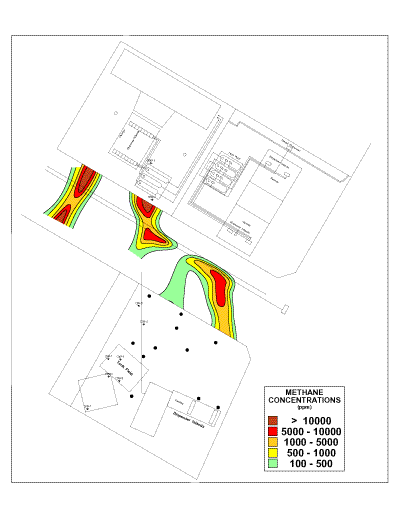 |
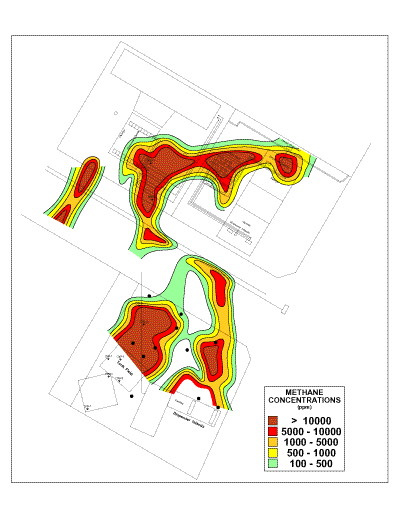 |
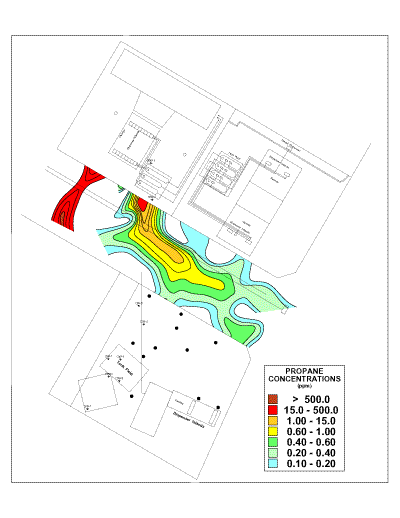 |
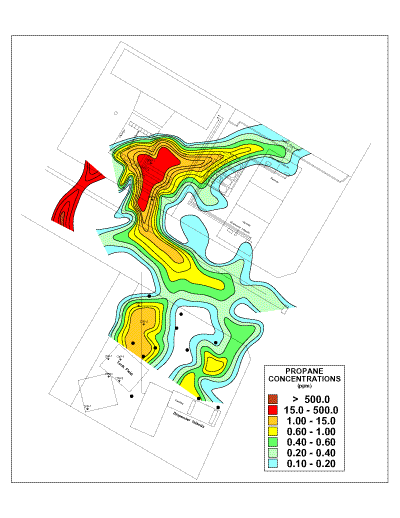 |
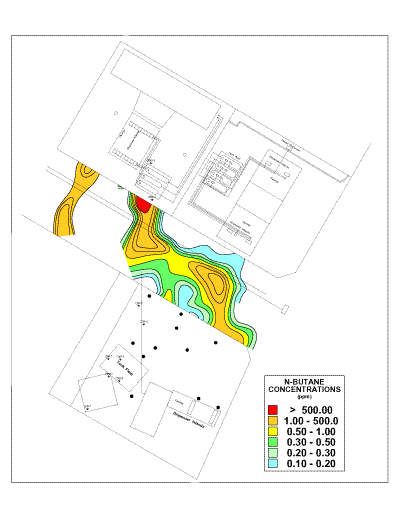 |
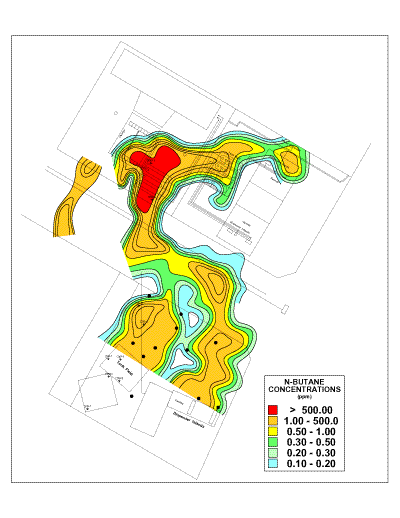 |
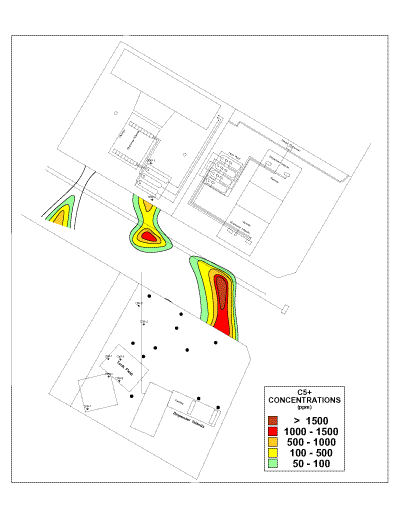 |
 |